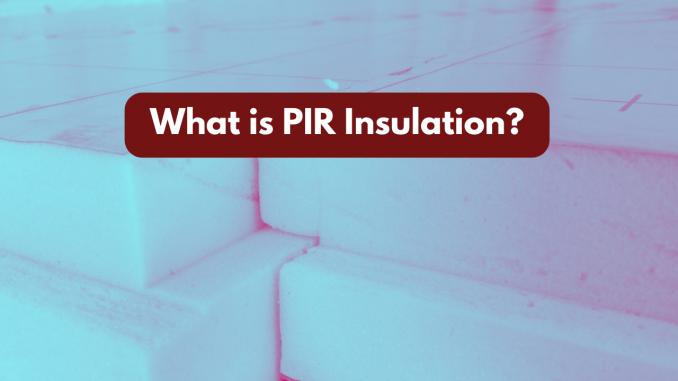
PIR insulation stands for Polyisocyanurate insulation, which is a type of rigid foam insulation material. It is known for its high thermal efficiency and is commonly used in construction for insulating roofs, walls, and floors.
It works by reducing heat transfer through its high thermal resistance. The rigid foam material minimises the conduction of heat, making it an effective insulator.
How is PIR Insulation Made?
PIR insulation is created by combining isocyanurate and polyol through a chemical reaction, resulting in a rigid foam board. It is typically installed in the form of rigid foam boards. It can be cut to fit the desired space and attached to surfaces using adhesives or mechanical fasteners. Proper installation techniques should be followed for optimal performance.
Is PIR Insulation Environmentally Friendly?
The recyclability of PIR insulation can vary depending on the specific product and manufacturer. Some PIR insulation boards are designed to be recyclable, but it’s essential to check with the manufacturer for specific details.
While PIR insulation provides energy efficiency, it’s important to consider the environmental impact of its production. Some manufacturers focus on producing PIR insulation with reduced environmental impact, using sustainable practices and materials.
Is PIR Insulation Water Resistant?
PIR insulation is inherently resistant to moisture and water absorption. The closed-cell structure of the foam helps to prevent the infiltration of water, making it a suitable choice for applications where exposure to moisture is a concern. This water resistance contributes to the durability of PIR insulation over time.
Is PIR Insulation Fire Resistant?
PIR insulation is designed to be fire-resistant. The chemical composition and structure of polyisocyanurate make it inherently less flammable compared to some other insulation materials. Additionally, manufacturers often treat PIR insulation with fire-retardant additives to enhance its fire resistance. This makes PIR insulation a safer choice for construction projects, especially when considering building codes and safety regulations.
It’s important to note that while PIR insulation has these inherent properties, proper installation and adherence to safety guidelines are crucial to ensure optimal performance. Additionally, specific product details and certifications from manufacturers should be consulted to confirm the level of water and fire resistance for a particular PIR insulation product.
Is PIR Insulation Expensive?
The cost of PIR (Polyisocyanurate) insulation can vary based on several factors, including the thickness of the insulation, the specific product or brand, and the region or country where it is purchased. In general, PIR insulation tends to be more expensive than some traditional insulation materials but may be competitive with other high-performance insulation options. Here are a few factors that can influence the cost:
- High Thermal Performance: PIR insulation is valued for its high thermal efficiency, which can contribute to energy savings over time. However, this enhanced performance may be reflected in a higher upfront cost compared to less efficient insulation materials.
- Installation Costs: The cost of PIR insulation is not only about the material itself but also includes installation expenses. Factors such as the complexity of the installation, labour costs, and any additional materials required for proper installation can contribute to the overall cost.
- Thickness and R-Value: Thicker PIR insulation generally has a higher R-value, indicating better thermal resistance. The cost may increase with higher thicknesses and R-values.
- Brand and Product Variation: Different manufacturers may offer PIR insulation products with varying features, certifications, and price points. Some brands may focus on specific attributes, such as sustainability or fire resistance, which can influence the cost.
- Market Conditions: Prices can fluctuate based on market conditions, availability of raw materials, and other economic factors.
While PIR insulation may have a higher initial cost, it is important to consider the long-term benefits, including energy savings and potential reductions in heating or cooling expenses. Additionally, some regions may offer incentives or rebates for using high-efficiency insulation materials, which can offset the initial investment.

Leave a Reply